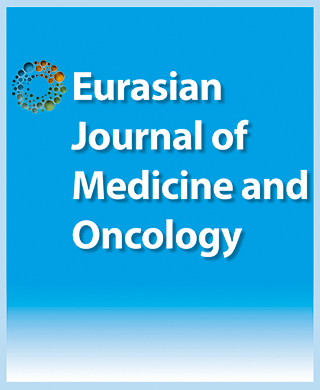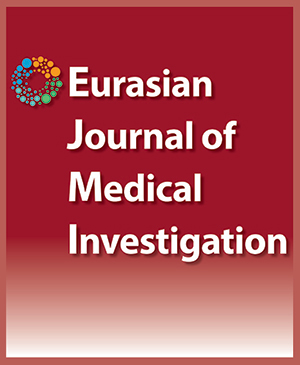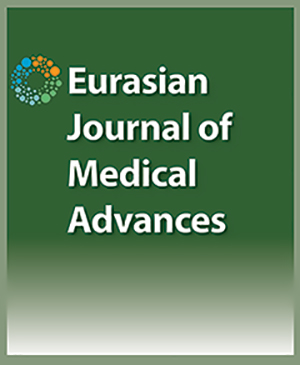

Prostate Biopsy to Diagnose Acute Bacterial Prostatitis: Current Microbiological Spectrum, Sensitivity to Antibiotics, and Clinical Findings in Turkey
Hakan Turk1, Sıtkı Un2, Gamze Aslı Sener3, Mehmet Yoldas4, Fırat Akdeniz5, Erkan Arslan51Department of Urology, Dumlupınar University Evliya Celebi Training and Research Hospital, Kutahya, Turkey, 2Department of Urology, Denizli State Hospital, Denizli, Turkey, 3Departement of Medical Microbiology, Katip Celebi University Ataturk Training and Research Hospital, Izmir, Turkey, 4Trabzon Kanuni Research and Training Hospital, Trabzon, Turkey, 5Department of Urology, Harran University Faculty of Medicine, Sanlıurfa, Turkey,
Objectives: Ultrasound-guided transrectal prostate biopsy is considered the standard procedure for diagnosing prostate cancer. However, minor complications, such as hematuria, hematospermia, and rectal bleeding, as well as clinically significant complications, such as urinary tract infections and acute bacterial prostatitis (ABP) can occur. ABP is an acute disease requiring immediate treatment. The aim of this study was to evaluate the clinical presentation, microbiological profile, antibiotic susceptibility, and treatment of patients with ABP that developed after a transrectal prostate biopsy. Methods: The records of a total of 3550 patients who underwent an ultrasound-guided transrectal prostate biopsy in the clinic between September 2012 and December 2017 were retrospectively examined. The age, prostate volume, prostate-specific antigen level, number of cores per prostate biopsy, biopsy indications, and urine and blood culture results of those with ABP were recorded. Results: Among 3550 patients who had undergone prostate biopsy, ABP developed in 195 (5.4%) following biopsy. Of these, 37 (39.3%) had initiated antibiotherapy treatment elsewhere before admission to this clinic. A positive urine culture was detected in 101 (51.7%) and a positive blood culture in 43 (22%) of the 195 patients diagnosed with ABP. The microorganisms were identified as Escherichia coli (141 patients), Klebsiella spp. (1 patient) and Enterococcus faecalis (2 patients). E. coli was the most common bacteria and was isolated in 98 (97%) of all urine cultures. Conclusion: In complicated urinary tract infections, clinicians should consider antibiotic resistance patterns, particularly in terms of extended-spectrum beta-lactamase-producing strains, and should make the required changes for the treatment to be successful according to the culture results. To reduce the rate of this complication, frequent use of antibiotics should be avoided in primary healthcare centers.
Cite This Article
Turk H, Un S, Sener G, Yoldas M, Akdeniz F, Arslan E. Prostate Biopsy to Diagnose Acute Bacterial Prostatitis: Current Microbiological Spectrum, Sensitivity to Antibiotics, and Clinical Findings in Turkey. EJMO. 2018; 2(2): 91-96
Corresponding Author: Hakan Turk



